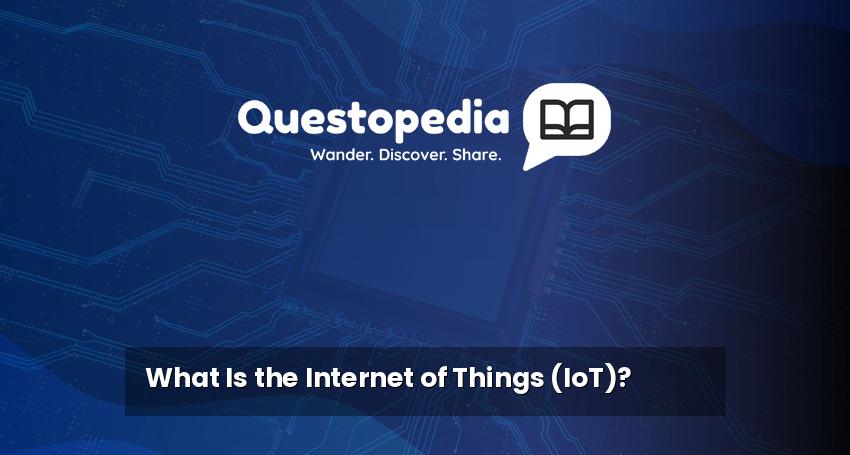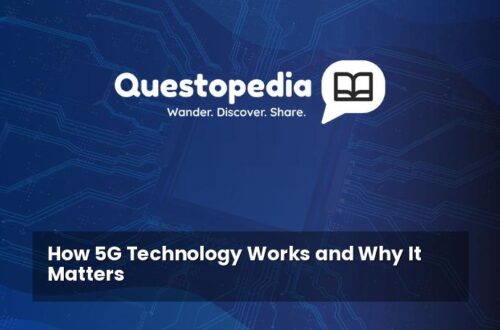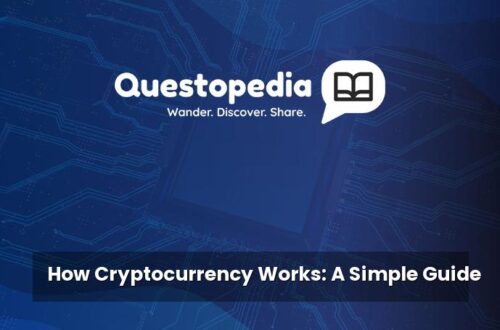What Is the Internet of Things (IoT)? A Beginner’s Guide
Have you ever heard the term “Internet of Things” or IoT and wondered what it actually means? Don’t worry, you’re not alone! The Internet of Things can sound complicated, but it’s actually a pretty simple concept. In this guide, we’ll break down IoT into easy-to-understand terms and show you how it’s already impacting your life.
Introduction: Connecting the Unconnected
Imagine a world where everyday objects can connect to the internet and “talk” to each other. That’s essentially what the Internet of Things is all about. It’s the idea of connecting everyday devices – like your refrigerator, your car, your thermostat, and even your toothbrush – to the internet, allowing them to collect and share data. This data can then be used to automate tasks, improve efficiency, and provide valuable insights.
Breaking Down the Basics of IoT
To really understand IoT, let’s look at the key components that make it work:
1. The “Things” Themselves
The “things” in IoT are the physical devices that are connected to the internet. These devices are embedded with sensors, software, and other technologies that allow them to collect data and communicate with each other and with the cloud. Examples include:
- Smart home devices (smart thermostats, smart lights, smart appliances)
- Wearable devices (smartwatches, fitness trackers)
- Industrial sensors (used in manufacturing and agriculture)
- Connected cars
- Smart city infrastructure (smart streetlights, smart parking meters)
2. Connectivity: How Things Talk
These “things” need a way to connect to the internet. Common connectivity methods include:
- Wi-Fi: The most common method for home and office IoT devices.
- Bluetooth: Used for short-range communication, like connecting a smartwatch to a smartphone.
- Cellular (4G, 5G): Allows devices to connect to the internet from almost anywhere.
- Low-Power Wide-Area Networks (LPWAN): Designed for devices that need to transmit small amounts of data over long distances with low power consumption (e.g., sensors in remote locations). Examples include LoRaWAN and NB-IoT.
3. Data: The Information Exchange
The sensors in IoT devices collect data about their environment. This data can include temperature, location, pressure, motion, and much more. This data is then transmitted to the cloud for processing and analysis.
4. Cloud: The Brains of the Operation
The cloud acts as the central hub for IoT data. It’s where the data is stored, processed, and analyzed. The cloud also provides the platform for managing and controlling IoT devices. Popular cloud platforms for IoT include Amazon Web Services (AWS) IoT, Microsoft Azure IoT Hub, and Google Cloud IoT Platform.
5. Analytics: Turning Data into Insights
Once the data is in the cloud, it can be analyzed to identify patterns, trends, and anomalies. This information can then be used to make better decisions, automate processes, and improve efficiency. For example, analyzing data from smart thermostats can help homeowners save energy and money.
Examples of IoT in Action
Here are a few real-world examples of how IoT is being used:
- Smart Homes: Controlling your lights, thermostat, and appliances remotely using your smartphone.
- Healthcare: Monitoring patients’ vital signs remotely and providing personalized care.
- Manufacturing: Optimizing production processes and predicting equipment failures.
- Agriculture: Monitoring soil conditions and automating irrigation.
- Transportation: Tracking vehicles and optimizing delivery routes.
Benefits of the Internet of Things
The Internet of Things offers a wide range of benefits, including:
- Increased Efficiency: Automating tasks and optimizing processes.
- Improved Decision-Making: Providing access to real-time data and insights.
- Enhanced Customer Experience: Offering personalized services and improved customer support.
- Reduced Costs: Optimizing resource utilization and preventing equipment failures.
- New Revenue Streams: Creating new products and services based on connected devices.
Challenges of IoT
While the Internet of Things offers many benefits, it also presents some challenges:
- Security: Protecting connected devices and data from cyberattacks. IoT security is a critical concern.
- Privacy: Ensuring the privacy of personal data collected by IoT devices.
- Interoperability: Making sure that different IoT devices and platforms can work together seamlessly.
- Complexity: Managing and maintaining a large number of connected devices.
- Data Overload: Processing and analyzing the massive amounts of data generated by IoT devices.
Conclusion: The Future is Connected
The Internet of Things is rapidly transforming the way we live and work. As technology continues to evolve and become more affordable, we can expect to see even more IoT devices and applications in the future. Understanding the basics of IoT is essential for anyone who wants to stay ahead of the curve in this increasingly connected world. From smart homes to smart cities, the Internet of Things has the potential to revolutionize virtually every industry and aspect of our lives.






